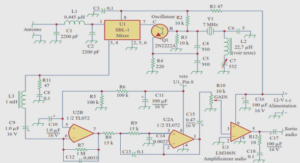Synthetic procedure for N-tert-butylcarbamate-2-azetine 5-31
1-Boc-3-hydroxyazetidine (3.4 g, 19.6 mmol, 1 equiv) was dissolved in pyridine (30 mL) and cooled to 0 º C. After addition of p-toluenesulfonylchloride (7.47 g, 19.6 mmol, 1 equiv), the reaction flask was capped and placed into the freezer for 24 hours. Et2O and H2O were then added, and the product extracted three times with Et2O. The combine organics were washed with 1N HCl (3 times) and brine to provide the desired product as a colorless oil (99% yield), which was used in the following step without further purification. Step b: Under a nitrogen atmosphere, to a solution of tert-butyl 3-(tosyloxy)azetidine -1-carboxylate (3 g, 9.15 mmol, 1 equiv) and t-BuOH (15 mL) was added a solution of t-BuOK (1.029 g, 13.8 mmol, 1.5 equiv) in t-BuOH (30 mL) dropwise via cannulation. The mixture was stirred overnight at 80 ºC. After the reaction was completed, H2O (60 mL) was added and the mixture was extracted with hexanes (3 times). The hexanes solution was then washed with brine and dried with MgSO4. After removal of the solvent at reduced pressure, the crude oil was purified by silica gel chromatography (elution solvent – pentane:Et2O = 1:1) to provide 586 mg of a colorless oil (yield: 43% ). were dissolved in ethyl acetate (1 ml/mmol of xanthate) with several drops of 2,6-lutidine (0.3~0.5 equiv.) was refluxed for 15 min. DLP (5 mol%) was then added and additional DLP (5 mol%) was added every 60 min until total consumption of xanthate. The mixture was then cooled to room temperature and the solvent was evaporated under reduced pressure. The residue was purified by flash chromatography on silica gel to yield the desired compounds.
General procedure B for pyrrole synthesis
To a solution of xanthate (1 equiv.) in dioxane (5 ml/mmol) were added p-toluene sulfonic acid monohydrate (0.5~1 equiv.) and amine (2~4 equiv.). The reaction mixture was refluxed under nitrogen for 0.5~1 h and then the solvent was evaporated under reduced pressure. The residue was purified by chromatography on silica gel to give the pyrrole products. In cases of trisubstituted pyrroles synthesis, the residue can be either purified by a column or used in the following step without purification. Following the general procedure A for radical addition, the reaction was carried out with a solution of 5-5a (304 mg, 0.96 mmol) and 2-azetine-1-carboxylic acid tert-butyl ester (163 mg, 1.05 mmol) with several drops of 2,6-lutidine, and needed 10 mol% of DLP to go to completion. Flash chromatography on silica gel (petroleum ether: ethyl acetate, 4:1 v/v) afforded 258 mg 5-6a (yield: 68%) as a pale yellow oil and a mixture of two diastereoisomers in a ratio 4:1. Following the general procedure A for radical addition, the reaction was carried out with a solution of 5-5b (301 mg, 0.84 mmol) and 2-azetine-1-carboxylic acid tert-butyl ester (142 mg, 0.7 mmol) with several drops of 2,6-lutidine, and needed 5 mol% of DLP to go to completion. Flash chromatography on silica gel (petroleum ether: ethyl acetate, 4:1 v/v) afforded 221 mg 5-6b (yield: 74%) as a pale yellow oil and a mixture of two diastereoisomers in a ratio 2:1.
Following the general procedure A for radical addition, the reaction was carried out with a solution of 5-5c (176 mg, 0.8 mmol) and 2-azetine-1-carboxylic acid tert-butyl ester (103 mg, 0.66 mmol) with several drops of 2,6-lutidine, and needed 5 mol% of DLP to go to completion. Flash chromatography on silica gel (petroleum ether: ethyl acetate, 4:1 v/v) afforded 203mg 5-6c (yield: 68%) as a pale yellow oil and a mixture of two diastereoisomers in a ratio 2:1. with a solution of 5-5d (310 mg, 0.96 mmol) and 2-azetine-1-carboxylic acid tert-butyl ester (163 mg, 1.05 mmol) with several drops of 2,6-lutidine, and needed 10 mol% of DLP to go to completion. Flash chromatography on silica gel (petroleum ether: ethyl acetate, 4:1 v/v) afforded 338 mg 5-6d (yield: 74%) as a pale yellow oil and a mixture of two diastereoisomers in a ratio 4:1. with a solution of 5-5g (240 mg, 0.96 mmol) and 2-azetine-1-carboxylic acid tert-butyl ester (163 mg, 1.05 mmol) with several drops of 2,6-lutidine, and needed 10 mol% of DLP to go to completion. Flash chromatography on silica gel (petroleum ether: ethyl acetate, 4:1 v/v) afforded 264 mg 5-6g (yield: 68%) as a pale yellow oil and a mixture of two diastereoisomers in a ratio 2:1, which could be separated.






